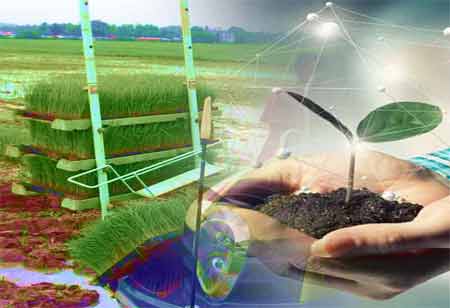THANK YOU FOR SUBSCRIBING
THANK YOU FOR SUBSCRIBING
Be first to read the latest tech news, Industry Leader's Insights, and CIO interviews of medium and large enterprises exclusively from Auto Tech Outlook

By
Auto Tech Outlook | Monday, April 22, 2024
Stay ahead of the industry with exclusive feature stories on the top companies, expert insights and the latest news delivered straight to your inbox. Subscribe today.
The Asia-Pacific automotive industry embraces sustainable technologies to combat resource depletion and greenhouse gas emissions, requiring a multi-stakeholder strategy.
FREMONT, CA: The automotive industry in the Asia-Pacific (APAC) region is undergoing remarkable expansion, driving a significant uptick in demand for electronic components, ranging from sophisticated advanced driver-assistance systems (ADAS) to intricate infotainment units. However, this rapid advancement comes with a notable environmental impact. Conventional electronics manufacturing methods are resource-intensive and often result in hazardous waste generation. The concept of sustainable automotive electronics addresses these challenges. It aims to shape a future where APAC's vehicles are cutting-edge, technologically, and environmentally conscientious.
The contemporary landscape of automotive electronics manufacturing presents notable environmental challenges. Firstly, extracting rare earth elements essential for electronic component production is associated with environmental degradation and the depletion of finite resources. Secondly, hazardous materials such as lead and mercury within electronic components pose risks throughout their lifecycle, from manufacturing to disposal. Moreover, the energy-intensive nature of electronics manufacturing contributes substantially to greenhouse gas emissions, exacerbating climate change concerns. Additionally, the rapid pace of technological advancement contributes to an escalating e-waste crisis, wherein outdated electronics are often improperly disposed of in landfills, releasing toxins and contaminating the environment. These multifaceted issues underscore the pressing need for sustainable practices and innovation within the automotive electronics industry.
The region is poised to lead the way in sustainable automotive electronics through several promising strategies. These include adopting bio-based materials, such as bioplastics derived from renewable sources like corn starch or cellulose, to reduce environmental impact significantly. Additionally, integrating recycled metals and plastics into electronic components reduces reliance on virgin resources and minimizes waste generation. Ethically sourcing minerals from certified conflict-free mines ensures responsible practices throughout the supply chain, further enhancing sustainability. The region can reduce energy consumption by embracing energy-efficient manufacturing techniques, such as utilizing renewable energy sources and optimizing production processes. Furthermore, designing electronics with easy disassembly in mind facilitates efficient recycling and reduces e-waste accumulation. These approaches enhance the sustainability of automotive electronics and position the APAC region as a leader in eco-friendly innovation.
The APAC region is a frontrunner in sustainable automotive electronics, fortified by several advantages. Notably, stringent environmental regulations across various countries within the area are compelling manufacturers to embrace eco-friendly practices, fostering a more sustainable automotive industry. Additionally, APAC's reputation as a hub for technological innovation underscores a proactive pursuit of sustainable solutions, with companies engaged in robust research and development endeavors focused on sustainable materials and processes. Moreover, the escalating consumer awareness and demand for environmentally responsible products within APAC bolster the market for sustainable automotive electronics, as discerning consumers are willing to invest in premium offerings aligned with their environmental values.
The evolution towards sustainable automotive electronics in the region necessitates a comprehensive strategy. Governments, manufacturers, and consumers must collaborate effectively to surmount obstacles and forge a future where state-of-the-art technology harmonizes with environmental stewardship. Through a commitment to innovation and a steadfast focus on sustainability, the APAC region can position itself as a frontrunner in environmentally conscious automotive electronics, setting the stage for a transportation landscape that is both cleaner and more ecologically sound.
 Copyright © 2025 AutoTech Outlook. All Rights Reserved | Privacy Policy | Subscribe | Sitemap | About us | Feedback Policy | Editorial Policy
Copyright © 2025 AutoTech Outlook. All Rights Reserved | Privacy Policy | Subscribe | Sitemap | About us | Feedback Policy | Editorial Policy 



